Choosing the right multifamily real estate broker can make the difference between a profitable transaction and a costly mistake. Unlike single-family deals, multifamily properties involve complex valuations, existing tenant relationships, sophisticated financing structures, and nuanced market dynamics that require specialized expertise.
Whether you’re selling an apartment building or acquiring your next investment property, the broker you select becomes your strategic partner in navigating these complexities. The wrong choice can lead to underpriced listings, overpaid acquisitions, or deals that fall apart during due diligence.
Smart investors don’t leave broker selection to chance. Instead, they come prepared with targeted questions that reveal whether a broker truly understands multifamily markets and can deliver results. Before you sign a listing agreement or make an offer, here are the top questions to ask multifamily real estate brokers to make sure you’re working with the right partner.
Questions Sellers Should Ask Multifamily Real Estate Brokers
1. What’s your experience with multifamily properties in this market?
Specialization matters significantly in multifamily real estate. A broker who primarily handles office buildings or retail properties may lack the nuanced understanding of tenant dynamics, rent roll analysis, and multifamily-specific valuation methods that drive successful sales.
Ask for specific examples of recent multifamily transactions, including property types, unit counts, and deal complexities they’ve handled. Look for brokers who can speak confidently about local rental market trends, typical buyer profiles, and common challenges specific to your property type.
2. How do you determine property valuation?
Accurate valuation forms the foundation of any successful multifamily sale. Your broker should demonstrate a thorough understanding of multiple valuation approaches — income capitalization, comparable sales, and replacement cost methods.
They should be able to explain how they analyze rent rolls, factor in vacancy rates, and assess the impact of deferred maintenance or capital improvements on pricing. According to the National Association of Realtors, proper valuation requires understanding both current income streams and future income potential.
3. What’s your marketing strategy?
Marketing multifamily properties requires reaching the right buyer pool while maintaining operational confidentiality. Your broker should outline a comprehensive strategy that includes professional marketing materials, targeted outreach to qualified investors, and strategic use of both public and private marketing channels.
Ask about their network reach and how they identify potential buyers who are actively seeking properties like yours. The broader their qualified buyer network, the more competitive bidding you’re likely to generate.
At SVN, our Advisors combine national marketing reach with local market insight — leveraging syndicated listing platforms, targeted email campaigns, and direct broker-to-broker collaboration across our 200+ offices to maximize exposure for each property.
4. How do you handle confidentiality?
Maintaining tenant relationships and business stability during the sales process requires careful discretion. Your broker should have clear protocols for protecting sensitive information while still providing buyers with the due diligence materials they need. Inquire about their process for handling tenant communications, managing property showings, and controlling information flow to prevent unnecessary disruption to your operations.
5. What fees and commission structure do you use?
Transparency in compensation is key and helps you budget accurately and avoid surprises. Understand not just the commission rate, but also any additional fees for marketing, administrative services, or transaction management.
6. What’s your track record with deals like mine?
Past performance doesn’t guarantee future results, but it provides valuable insight into a broker’s capabilities. Request specific metrics: average days on market, percentage of list price achieved, and deal completion rates for similar properties.
Pay attention to how they’ve handled challenging situations — deals that required creative financing, properties with occupancy issues, or transactions that faced unexpected obstacles.
7. How do you screen buyers?
Qualified buyers save time and prevent deal failures. Strong multifamily real estate brokers pre-screen investors to confirm financial capacity before negotiations begin, including proof of funds, financing pre-approval, and investment experience.
Questions Buyers Should Ask Multifamily Real Estate Brokers
1. How well do you know this submarket?
Hyper-local knowledge separates good brokers from great ones. Your broker should demonstrate intimate familiarity with neighborhood rental rates, vacancy trends, tenant demographics, and upcoming developments that could impact property values. They should be able to discuss recent comparable sales, typical cap rate ranges, and market-specific factors that influence multifamily performance in your target area.
2. What’s your process for finding off-market opportunities?
In competitive markets, off-market deals often provide buyers with better pricing and fewer bidding wars. Ask about their relationships with property owners, other brokers, and industry contacts that generate exclusive opportunities. A well-connected broker should have systematic approaches for identifying properties before they hit the public market, giving you first access to the best deals.
3. How do you evaluate risks with a property?
Beyond the financials, brokers should help you spot potential red flags — deferred maintenance, zoning issues, or rising operating costs. Ask about their due diligence process and how they help buyers identify both obvious and hidden risks that could impact returns.
4. What cap rates are typical here right now?
This question tests both market knowledge and honesty. A knowledgeable broker should provide current cap rate ranges for different property types and quality levels, backed by recent transaction data.
Be wary of brokers who give vague answers or seem disconnected from current market realities. The Federal Reserve Economic Data provides a broader economic context that professional brokers should understand and reference when discussing local market conditions.
5. Can you connect me with lenders and other resources?
Multifamily transactions often require specialized financing, legal expertise, and professional services. Your broker should have established relationships with lenders who understand investment properties, attorneys experienced in multifamily transactions, and other professionals who can support your deal.
This network becomes particularly valuable when deals face tight timelines or unusual circumstances that require expert guidance.
6. What are common deal-breakers you see in multifamily sales?
Learning from others’ mistakes can save you time and money. Experienced brokers can share insights about common issues that cause deals to fail — whether it’s unrealistic seller expectations, buyer financing problems, or property condition surprises. This knowledge helps you avoid problematic situations and structure offers that are more likely to succeed.
7. How do you handle multiple-offer scenarios?
In competitive markets, multiple-offer situations are common. Your broker should have a clear strategy for positioning your offer competitively while protecting your interests. Ask about their approach to escalation clauses, non-price terms that can make offers more attractive, and how they gather intelligence about competing bids.
The Overarching Question
Regardless of whether you’re buying or selling, the most important question is: “How will you help me maximize returns and minimize risks?”
The best multifamily brokers don’t just facilitate transactions — they serve as strategic advisors who understand your investment objectives and work proactively to achieve them. They should be able to articulate specific strategies for optimizing your outcomes while protecting you from common pitfalls.
Look for brokers who demonstrate genuine expertise, maintain extensive professional networks, and show commitment to client success beyond just closing deals.
Making the Strategic Choice
Multifamily real estate transactions are too significant and complex to leave broker selection to chance. The questions outlined above help you identify professionals who truly understand multifamily markets and can deliver the expertise your investment deserves.
Remember that the best brokers often distinguish themselves not just through individual expertise, but through their access to collaborative networks that amplify market reach and deal flow. When evaluating potential partners, consider how their professional relationships and organizational resources can benefit your specific transaction goals.
Take time to ask these questions thoroughly. The right broker becomes a valuable long-term partner who can support your multifamily investment success for years to come. At SVN, our collaborative network of multifamily specialists combines local market expertise with national reach, ensuring our clients benefit from both deep market knowledge and extensive buyer-seller networks.
Contact our multifamily experts to discuss how our proven approach to multifamily transactions can help you achieve your investment objectives.


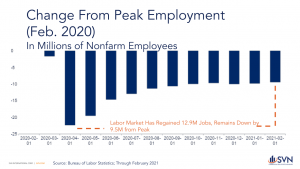
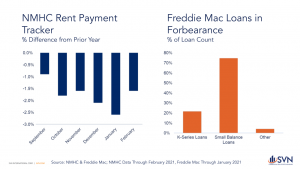


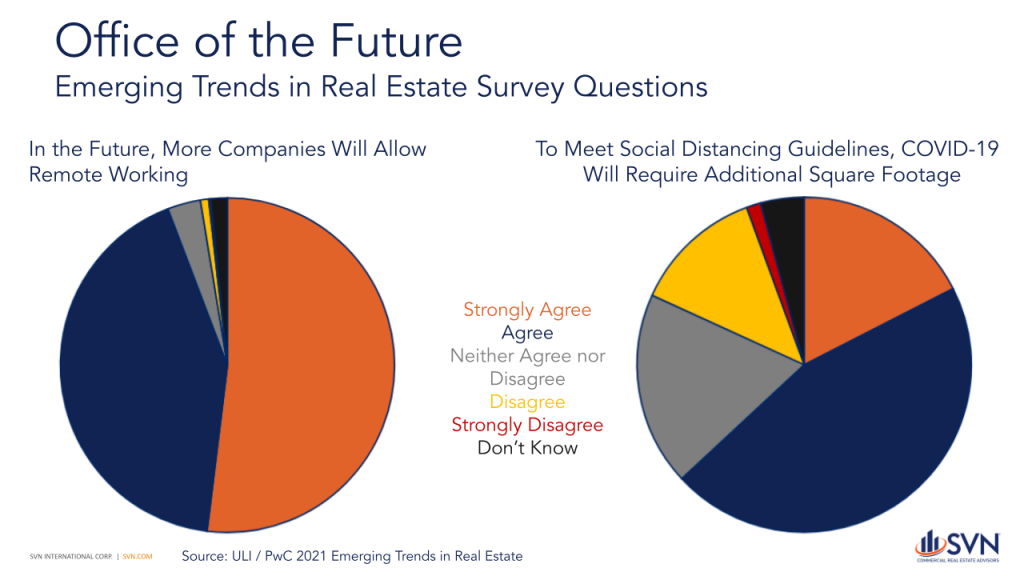
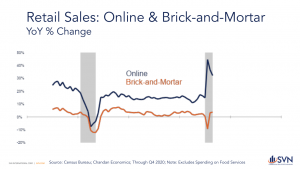
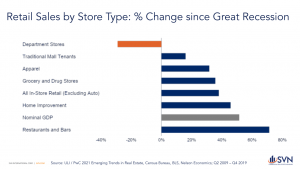
 Tampa has recovered significantly after experiencing deep impacts from the recession and is now growing jobs at an annualized pace of 3.6% with an unemployment rate of 4.8% as of January ‘16, according to the Bureau of Labor Statistics. Job growth also helped sustain population growth of 6.8% from 2010 to 2014, according to the Census Bureau. This growth has caused the multifamily sector in Tampa to expand with growing rents, falling occupancies, and lots of new supply. 2016 should bring approximately 5% rent growth with stable occupancy levels. The city is approximately 50% rental housing based and should demand more units as economic expansion continues. Top sectors for employment growth include Construction, Professional and Business Services, Leisure and Hospitality, and Financial Activities which have annualized growth rates of 7.1%, 7.1%, 6.6%, 3.4%, respectively.
Tampa has recovered significantly after experiencing deep impacts from the recession and is now growing jobs at an annualized pace of 3.6% with an unemployment rate of 4.8% as of January ‘16, according to the Bureau of Labor Statistics. Job growth also helped sustain population growth of 6.8% from 2010 to 2014, according to the Census Bureau. This growth has caused the multifamily sector in Tampa to expand with growing rents, falling occupancies, and lots of new supply. 2016 should bring approximately 5% rent growth with stable occupancy levels. The city is approximately 50% rental housing based and should demand more units as economic expansion continues. Top sectors for employment growth include Construction, Professional and Business Services, Leisure and Hospitality, and Financial Activities which have annualized growth rates of 7.1%, 7.1%, 6.6%, 3.4%, respectively. Seattle is one of the fastest growing cities on the West Coast, with a population that grew 9.8% from 2010 to 2014, according the Census Bureau. Job growth continues at an annualized pace of 3.0% while unemployment has been stable with the latest reading in January ‘16 of 5.6%, according to the Bureau of Labor Statistics. Seattle is an expensive city to live in and as such approximately 54% of the housing units are rentals, according to the Census Bureau. The need for ample housing is real and multifamily assets should perform well for 2016 and beyond. Rents are expected grow over 5% as new supply hits record highs to fill new demand. The best sectors for job creation include Information, Leisure and Hospitality, Trade, Transportation, and Utilities, and Financial Activities, which are growing at 8.1%, 5.0%, 4.2%, and 4.1% annualized rates, respectively.
Seattle is one of the fastest growing cities on the West Coast, with a population that grew 9.8% from 2010 to 2014, according the Census Bureau. Job growth continues at an annualized pace of 3.0% while unemployment has been stable with the latest reading in January ‘16 of 5.6%, according to the Bureau of Labor Statistics. Seattle is an expensive city to live in and as such approximately 54% of the housing units are rentals, according to the Census Bureau. The need for ample housing is real and multifamily assets should perform well for 2016 and beyond. Rents are expected grow over 5% as new supply hits record highs to fill new demand. The best sectors for job creation include Information, Leisure and Hospitality, Trade, Transportation, and Utilities, and Financial Activities, which are growing at 8.1%, 5.0%, 4.2%, and 4.1% annualized rates, respectively.
 San Jose is one of the hottest cities in the Bay Area and thus has experienced very strong employment growth since 2011 which has brought the unemployment rate down to 3.9% as of January ‘16 while jobs are still being created at the robust pace of 3.8% annualized according to the Bureau of Labor Statistics. Population growth is also significant at 6.6% from 2010 to 2014 as people find this market relatively more affordable. The San Jose housing stock is traditionally owner oriented with only 43% used for rentals. Given the rate of regional growth, local multifamily assets are very well positioned to pick up demand from surrounding areas a well as localized growth. Rent growth is expected to exceed 5% with relatively low new supply in 2016. Top sectors in job creation include Construction, Information, and Professional and Business Services with annualized growth rates of 10.3%, 8.4%, and 6.8%, respectively.
San Jose is one of the hottest cities in the Bay Area and thus has experienced very strong employment growth since 2011 which has brought the unemployment rate down to 3.9% as of January ‘16 while jobs are still being created at the robust pace of 3.8% annualized according to the Bureau of Labor Statistics. Population growth is also significant at 6.6% from 2010 to 2014 as people find this market relatively more affordable. The San Jose housing stock is traditionally owner oriented with only 43% used for rentals. Given the rate of regional growth, local multifamily assets are very well positioned to pick up demand from surrounding areas a well as localized growth. Rent growth is expected to exceed 5% with relatively low new supply in 2016. Top sectors in job creation include Construction, Information, and Professional and Business Services with annualized growth rates of 10.3%, 8.4%, and 6.8%, respectively. Reno is experiencing sustained gains in employment with a 4.4% annualized rate after being severely impacted by the past recession; unemployment has improved dramatically and now sits at a still relatively high 6.2% as of January ‘16, according to the Bureau of Labor Statistics. Population has grown robustly with a 4.9% increase from 2010 to 2014, according to the Census Bureau. As is common with tourist market economies, the percentage of city housing used for rental purposes is high at 53% meaning that job growth will quickly mean growth for the multifamily sector. The city’s economy is rapidly diversifying with the biggest gains coming from Construction, Professional and Business Services, Financial Activities, and Education and Health Services with annualized growth rates of 9.6%, 9.5%, 5.2%, and 5.0%, respectively.
Reno is experiencing sustained gains in employment with a 4.4% annualized rate after being severely impacted by the past recession; unemployment has improved dramatically and now sits at a still relatively high 6.2% as of January ‘16, according to the Bureau of Labor Statistics. Population has grown robustly with a 4.9% increase from 2010 to 2014, according to the Census Bureau. As is common with tourist market economies, the percentage of city housing used for rental purposes is high at 53% meaning that job growth will quickly mean growth for the multifamily sector. The city’s economy is rapidly diversifying with the biggest gains coming from Construction, Professional and Business Services, Financial Activities, and Education and Health Services with annualized growth rates of 9.6%, 9.5%, 5.2%, and 5.0%, respectively. Portland has experienced rapid employment growth in 2015, bringing the unemployment rate down to 4.7% as of January ‘16 while sustaining new job creation at a rate of 3.1%, according to the Bureau of Labor Statistics. Population in the city grew by 6.1% between 2010 and 2014 according to the Census Bureau who also reports that approximately 47% of the housing stock is used for rentals. Portland is a relatively high priced market for the nation but still affordable for a major West Coast metro with an excellent quality of life. Leading employment sectors include Information, Leisure and Hospitality, and Education and Health Services growing at 9.4%, 4.6%, and 4.5% respective annualized rates. These dynamics should lead to strong performance of the multifamily sector in 2016 and beyond with rents growing over 10% this year as new supply remains relatively moderate.
Portland has experienced rapid employment growth in 2015, bringing the unemployment rate down to 4.7% as of January ‘16 while sustaining new job creation at a rate of 3.1%, according to the Bureau of Labor Statistics. Population in the city grew by 6.1% between 2010 and 2014 according to the Census Bureau who also reports that approximately 47% of the housing stock is used for rentals. Portland is a relatively high priced market for the nation but still affordable for a major West Coast metro with an excellent quality of life. Leading employment sectors include Information, Leisure and Hospitality, and Education and Health Services growing at 9.4%, 4.6%, and 4.5% respective annualized rates. These dynamics should lead to strong performance of the multifamily sector in 2016 and beyond with rents growing over 10% this year as new supply remains relatively moderate. Phoenix experienced significant gains in overall employment in 2015 that moved the number of jobs significantly above pre-recession peaks as unemployment fell to 4.6% in January ‘16 with continued annualized employment gains of 3.6%. The population grew by 6.2% from 2010 to 2014, according to the Census Bureau, helping to fuel new demand for apartment units. The city utilizes approximately 46% of its housing units as rentals and has relative affordability with high quality of life making the market a prime one to grow in 2016 and beyond, with rents expected to grow over 5% this year. The leading employment sectors are Information, Construction, Financial Activities, Education and Health Services, and Professional and Business Services, growing at annualized rates of 7.6%, 6.3%, 5.3%, 5.2%, and 5.1%, respectively.
Phoenix experienced significant gains in overall employment in 2015 that moved the number of jobs significantly above pre-recession peaks as unemployment fell to 4.6% in January ‘16 with continued annualized employment gains of 3.6%. The population grew by 6.2% from 2010 to 2014, according to the Census Bureau, helping to fuel new demand for apartment units. The city utilizes approximately 46% of its housing units as rentals and has relative affordability with high quality of life making the market a prime one to grow in 2016 and beyond, with rents expected to grow over 5% this year. The leading employment sectors are Information, Construction, Financial Activities, Education and Health Services, and Professional and Business Services, growing at annualized rates of 7.6%, 6.3%, 5.3%, 5.2%, and 5.1%, respectively. Job growth in Philadelphia has brought the city back above pre-recession employment levels as unemployment stays steady at 4.8% as of January ‘16 with modest annualized employment growth of 2.1%, according to the Bureau of Labor Statistics. Population growth has been below the national average as the city only gained 2.2% from 2010 to 2014, according to the Census Bureau. Accordingly, demand for new apartment units is modest compared to other metros of similar size; yet the city does have a relatively high use of housing units as rentals at approximately 47%. Philadelphia does have an advantage in affordability, especially compared with other East Coast metros, and thus has growth potential with rents forecast to grow by over 3% in 2016. The city’s top sectors for job growth include Mining, Logging, and Construction as well as Professional and Business Services where are expanding at annualized rates of 8.2% and 3.7%, respectively.
Job growth in Philadelphia has brought the city back above pre-recession employment levels as unemployment stays steady at 4.8% as of January ‘16 with modest annualized employment growth of 2.1%, according to the Bureau of Labor Statistics. Population growth has been below the national average as the city only gained 2.2% from 2010 to 2014, according to the Census Bureau. Accordingly, demand for new apartment units is modest compared to other metros of similar size; yet the city does have a relatively high use of housing units as rentals at approximately 47%. Philadelphia does have an advantage in affordability, especially compared with other East Coast metros, and thus has growth potential with rents forecast to grow by over 3% in 2016. The city’s top sectors for job growth include Mining, Logging, and Construction as well as Professional and Business Services where are expanding at annualized rates of 8.2% and 3.7%, respectively. The multifamily market in Charlotte has experienced strong growth in demand as the city has gained 10.1% in population from 2010 to 2014, according to the Census Bureau. This has been fueled by significant job growth that has set new records substantially above pre-recession peaks, leading the present unemployment rate to sit at 5.3% as of January ‘16 with new job creation occurring at an annualized rate of 2.8%, according to the Bureau of Labor Statistics. Approximately 45% of the city’s housing stock is renter occupied. Thus, a good deal of the new population is likely to demand an apartment. Further, gross rents are below national averages, making Charlotte affordable and capable of seeing meaningful rent growth. New supply has grown approximately 4% in 2015 which will lower rent growth slightly in 2016, but still likely to be robust and above 4%. Many sectors are adding jobs at annualized rates above 4%, including Financial Activities, Professional and Business Services, and Leisure and Hospitality. However, this city does face a unique risk to continued growth from the new “bathroom” law, perceived very negatively by many; this could jeopardize new job growth and thus the market if firms choose to relocate or otherwise curtail operations in the state.
The multifamily market in Charlotte has experienced strong growth in demand as the city has gained 10.1% in population from 2010 to 2014, according to the Census Bureau. This has been fueled by significant job growth that has set new records substantially above pre-recession peaks, leading the present unemployment rate to sit at 5.3% as of January ‘16 with new job creation occurring at an annualized rate of 2.8%, according to the Bureau of Labor Statistics. Approximately 45% of the city’s housing stock is renter occupied. Thus, a good deal of the new population is likely to demand an apartment. Further, gross rents are below national averages, making Charlotte affordable and capable of seeing meaningful rent growth. New supply has grown approximately 4% in 2015 which will lower rent growth slightly in 2016, but still likely to be robust and above 4%. Many sectors are adding jobs at annualized rates above 4%, including Financial Activities, Professional and Business Services, and Leisure and Hospitality. However, this city does face a unique risk to continued growth from the new “bathroom” law, perceived very negatively by many; this could jeopardize new job growth and thus the market if firms choose to relocate or otherwise curtail operations in the state. The Denver multifamily market has experienced significant additions of new supply as its population has grown 10.6% from 2010 to 2014, according to the Census Bureau. Further, the employment market is outstanding with 3.0% unemployment as of January ‘16 and annualized job growth of 2.5%, according to the Bureau of Labor Statistics. Denver features a larger renter population with approximately 50% of its metro’s housing units used for rental purposes; still rental rates are relatively affordable for a metro of its size, giving it room to grow. Top sectors for employment growth include Leisure and Hospitality, Financial Activities, Manufacturing, and Professional and Business Services growing at annualized rates of 6.0%, 3.9%, 3.5%, and 3.2%, respectively. As such, rent growth could hit 7% in 2016.
The Denver multifamily market has experienced significant additions of new supply as its population has grown 10.6% from 2010 to 2014, according to the Census Bureau. Further, the employment market is outstanding with 3.0% unemployment as of January ‘16 and annualized job growth of 2.5%, according to the Bureau of Labor Statistics. Denver features a larger renter population with approximately 50% of its metro’s housing units used for rental purposes; still rental rates are relatively affordable for a metro of its size, giving it room to grow. Top sectors for employment growth include Leisure and Hospitality, Financial Activities, Manufacturing, and Professional and Business Services growing at annualized rates of 6.0%, 3.9%, 3.5%, and 3.2%, respectively. As such, rent growth could hit 7% in 2016. Boston’s economy has experienced significant job growth such that its unemployment rate is now 4.0% as of January ‘16 and new jobs are being created at a 1.4% annualized rate, according to the Bureau of Labor Statistics. Further, population has grown 6.2% from 2010 to 2014, according to the Census Bureau, and has thus significantly increased the demand for rental housing in the metropolitan region. Bostonians are highly predisposed to renting as over 65% of the housing units in the city are rentals according to Census data; thus prolonged population and job growth will place great pressure on rents which could grow over 6% in 2016 and keep occupancies above 97% while new supply is likely to remain less than 2% . The top sectors for job growth include Financial Activities and Education and Health Services which are growing at 3.1% and 2.9% annualized rates, respectively.
Boston’s economy has experienced significant job growth such that its unemployment rate is now 4.0% as of January ‘16 and new jobs are being created at a 1.4% annualized rate, according to the Bureau of Labor Statistics. Further, population has grown 6.2% from 2010 to 2014, according to the Census Bureau, and has thus significantly increased the demand for rental housing in the metropolitan region. Bostonians are highly predisposed to renting as over 65% of the housing units in the city are rentals according to Census data; thus prolonged population and job growth will place great pressure on rents which could grow over 6% in 2016 and keep occupancies above 97% while new supply is likely to remain less than 2% . The top sectors for job growth include Financial Activities and Education and Health Services which are growing at 3.1% and 2.9% annualized rates, respectively.





















